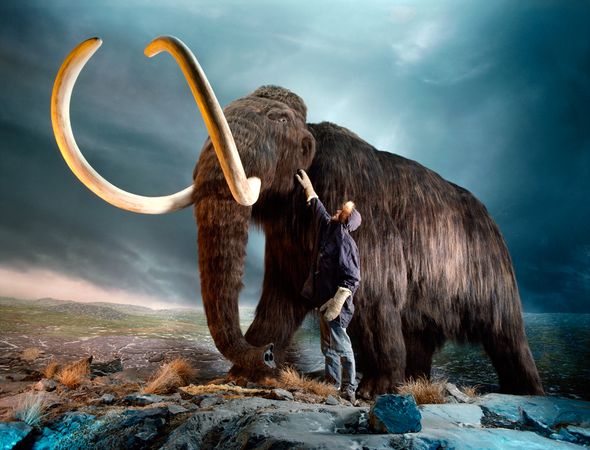Extinct Animals To Be Resurrected via Cloning – Nat Geo Reports
konknaijagirl | On 09, Mar 2013
A museum worker inspects a replica of a woolly mammoth (Mammuthus primigenius), a species that went extinct 3,000 to 10,000 years ago. In March 2012, scientists in Russia and South Korea announced a partnership to try to clone the mammoth and generate a living specimen. (See “Species Revival: Should We Bring Back Extinct Animals?”)
National Geographic News asked Hendrik Poinar, a molecular evolutionary geneticist and biological anthropologist at the Ancient DNA Centre at McMaster University in Hamilton, Ontario, if we might soon see the gigantic land mammals roaming the steppe again. Poinar will speak about the emerging technology at the TEDx Conference on DeExtinction in Washington this month.
“People were painting pictures of woolly mammoths in caves in France 35,000 years ago, so we have this amazing history with them,” Poinar said.
Poinar’s team isolates DNA and proteins from fossils and preserved remains, and then uses sophisticated sequencing and analysis tools to answer questions about species extinctions, evolution, and even the spread of infectious diseases. Poinar has tested relatively well-preserved samples from mammoth carcasses uncovered in the Yukon and Siberia. The mammoth remains had been entombed in the permafrost (permanently frozen ground), so degradation of their DNA had been slowed over time, Poinar explained.
New Gene Tools
In 2006, Poinar’s lab began to map large sections of the mammoth’s genome, aided by new high-input DNA sequencers, which can quickly analyze millions of fragments. This is important, because even the most well-preserved mammoth specimens have DNA strands that have fallen apart into countless smaller sequences, since the complex molecule is highly susceptible to decay (Poinar said DNA starts breaking down as soon as a living thing dies.)
“You’ll never really create an exact genome because when you have short fragments there are no good ways to know how many repeats of sequences there are,” said Poinar. But scientists can compare the fragments to each other to find overlapping areas, and then piece together much of the strand. Then, they can map those regions against the DNA of the closest living relative of the mammoth—the Asian elephant.
“We can in theory use that information to modify existing chromosomes with what we imagine to be mammoth substitutions,” said Poinar. The result would be an elephant-mammoth hybrid, and such a creature could theoretically be implanted into the womb of a mother elephant. Get the formula right, and the offspring might be “a mammoth in the eye of the beholder,” said Poinar.
Raising Big Questions
Poinar asked why scientists would want to do that in the first place. “Is it because we have this ability, to push the boundaries of what’s possible for the sake of innovation?” he asked.
Poinar added, “Would it give conservation movements something new to generate excitement, or does it generate apathy, so people ask ‘why do we need to care about saving them in the wild if we can bring them back?’”
Poinar said he thought parts of Siberia could support reborn populations of mammoths, and that they would likely be able to survive, even in a warming climate, because they had existed across such a wide range.
“That doesn’t mean it’s the right thing to do,” Poinar added. “As much as the kid in me would love to see these fantastic species plundering across the north, it’s hard to see a reason why we should unless we think this technology could give us tools for conservation.” He explained that the real win would be adapting such techniques to bolster the numbers of current endangered species, such as mountain gorillas.
—Brian Clark Howard
culled from National Geographic
Woolly Mammoth
Photograph by Jonathan S. Blair, National Geographic














